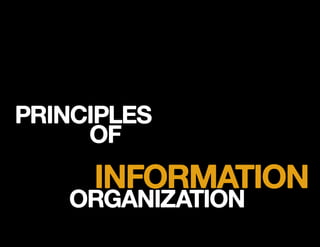
info_processing
- 2. MEMORY
- 3. stage theory model Also know as the Atkinson + Shiffrin Model Asserts that human memory develops in three specific stages: 1. Sensory input 2. Short-term memory 3. Long-term memory
- 4. sensory input Also called notice Senses recognize + momentarily store incoming environmental stimuli Brain either filters out this stimuli or transfers it to short-term memory
- 5. short-term memory Also called storage Can begin to process information in an active + conscious way Can discard information or continue thinking about it The latter creates a rehearsal/feedback loop
- 6. long-term memory Permanent depository where information is stored + retrieved when it is needed Storage in long-term memory is indefinite
- 9. miller’s magic number Result of short-term memory stud- ies by George Miller, a psychology professor at Harvard in the 1950s Determined that the human brain can remember seven “chunks”, or single units of information, plus or minus two
- 10. which telephone number is easier to remember?
- 12. the colours of the visible light spectrum can be more easily remembered through a mnemonic device.
- 13. ROY G BIV
- 14. PERCEPTION
- 15. weber’s law Also called Law of Just Noticeable Differences Defines minimum amount of change required for an individual to take notice Amount of change remains constant + can be predicted for future stimuli
- 16. which weights of a type- face can the average audience easily identify?
- 18. cleveland’s task model Developed by William S. Cleveland at Purdue University Pertains to how readers processes charts + graphs Readers use graphs to obtain both general + specific details
- 19. pattern perception User sees trends in the data Can make broad, comprehensive conclusions about a graph’s content Individual variables are not as im- portant as an overall understanding of the content
- 20. 41% 34% 21% 16%
- 21. table lookup Requires the reader to undertake an analysis of more detailed content Reader is making determinations about a single subject + its relation- ship to the rest of the graph Information being processed is a detail of a larger whole
- 22. 41% 34% 21% 16%
- 24. inverted pyramid Style of writing common in journalism Places most important or newsworthy information at the beginning of the story Orders the remaining information based on relative importance
- 26. principle of least effort Developed by Thomas Mann, a librarian at the US Library of Congress Regardless of experience, users will naturally gravitate towards familiar + easy tools, even if the resulting yield is poor
- 27. a weekday edition of the new york times contains more information than the average person was likely to come across in a lifetime in 17th-century england.
- 28. LATCH Model for organizing information developed by Richard Saul Wurman Contains only five ways of grouping content
- 30. location Structures information based on physical geography Examples include maps, transporta- tion routes, + travel guides Use when physical connections are important to understanding
- 31. asia china japan europe france germany italy spain uk north america canada usa south america mexico united nations members by location
- 32. alphabet Bases content structure on letter sequence Very familiar to most audiences Examples include dictionaries, encyclopedias, + telephone books Recommended for placing very specific content in a large pool of information
- 33. canada china france germany italy japan mexico spain uk usa united nations members alphabetically
- 34. time Useful when users need to understand the sequence of events Examples include calendars, arrival/ departure boards, + timelines Recommended when chain of events is highly relevant to context
- 35. 1945 canada china mexico uk usa 1955 italy spain 1956 japan france 1973 germany united nations members by date of entry
- 36. category Group information with similar features or attributes Examples include e-commerce websites + scientific classifications Recommended when connections be- tween information sets are important
- 37. security council permanent members china france uk usa elected to security council in 2008 italy elected to security council prior to 2008 canada germany japan united nations members by category
- 38. hierarchy Organizes information by measure or by perceived importance Examples include emergency instructions + military insignia Recommended when necessary to assign weight or value to the order of information
- 39. usa 22% japan 19.4% germany 8.6% uk 6.1% france 6% italy 4.8% canada 2.8% spain 2.5% china 2% mexico 1.8% percentage of contribution to united nations general budget
- 42. references Cleveland, William S. Visualizing Data. Hobart Press, 1993. Visocky O’Grady, Ken & Jenn. The Information Design Handbook. HOW Books, 2008. Wurman, Richard Saul. Information Anxiety. Bantam Books, 1990.
